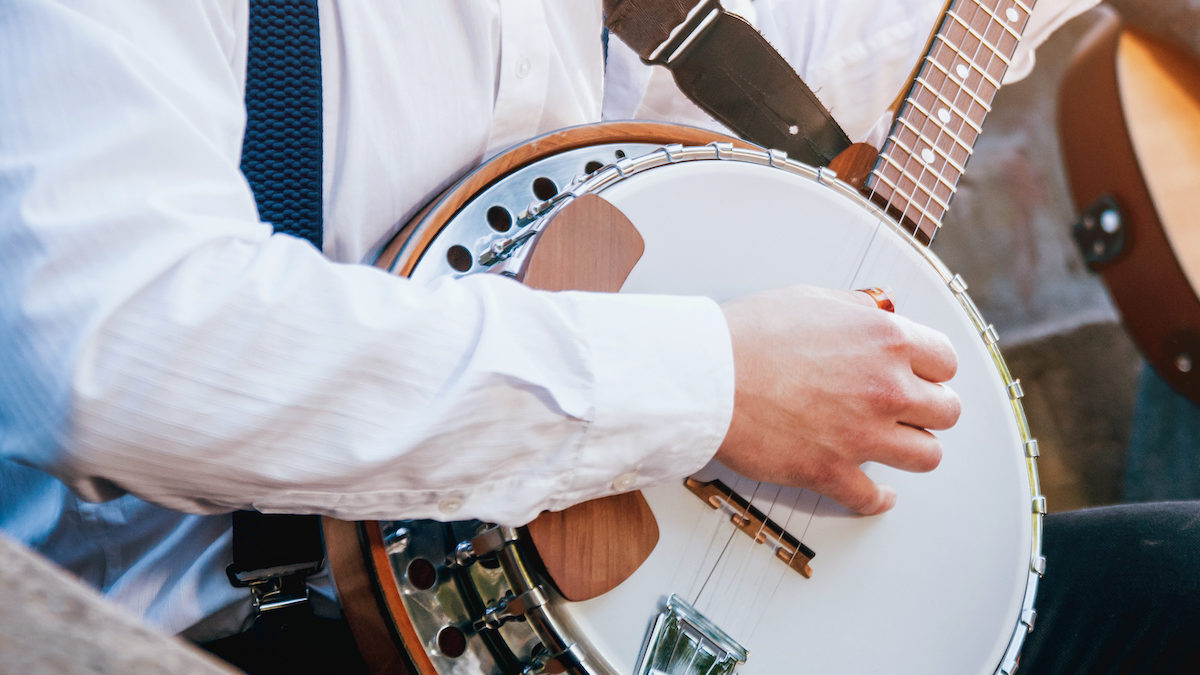The banjo is a piece of musical Americana. Songs of the South. An everyman’s’ instrument. A part of a patellar outcropping (“A banjo on my knee”). The banjo is as ingrained in the telling of America’s musical tapestry as a violin is central to the musical history of Europe.
Origin
The banjo’s origins are African. While European explorers were bringing slaves to the New World in the 1600s, the slaves brought their skill in playing these banjos-like instruments to the Americas.
In early cultural appropriations, white musicians donned blackface and strummed along in minstrel shows. This cemented the popularity of the banjo in American culture, but the oncoming war of the states would spread the banjo’s popularity countrywide. Appalachian musicians took the songs of their European ancestors and made the folk song a lament for the widespread misery of the war and thus a national musical trend was galvanized.
Evolution
The next step in the banjo’s musical evolution was again centered around a terrible event. World War I took Americans to a stage where our music and instruments were given a different treatment: Jazz. European musicians gravitated to playing a different style of music on the venerable banjo. The banjo was sought out for being an instrument that had a volume that could compete with the horns and drums.
The banjo faced the ultimate competition for musical supremacy on the landscape of popular music: the dollar. During the Great Depression, the banjo was at least three times as pricey as a guitar, and quickly the guitar took over as the best seller. The guitar, being cheaper, was a pre-eminent force in the early Blues music. The banjo stayed in the background until the advent of the latest incarnation of American folk music, Bluegrass.
Popular Culture
Bill Monroe reintroduced the banjo to the popular culture, and Earl Scruggs revolutionized the instrument. Scruggs’ style of playing became the standard that everyone recognized and propelled Bluegrass to a peak in American music.
The Folk music boom of the civil rights era brought the banjo back again to cultural significance. The banjo brought a plaintive wail to the protest songs of the day; a throwback to the cries of anguish of the Depression-era life.
Dueling Banjos
As an interesting aside, the “Dueling Banjos” song made famous in the thriller “Deliverance” kept the banjo alive in the consciousness of the radio listener in the early ’70s. A piece of further musical trivia, the song was originally called “Feuding Banjos” by Arthur Smith and also appeared in an episode of “The Andy Griffith Show.”
In the modern music scene, the banjo is primarily in the world of Bluegrass. The influx of new traditionalist/revivalist bands like Mumford and Sons and the Avett Brothers have brought the banjo back to the forefront of the modern musical culture.
The banjo is often dismissed as a “hillbilly” instrument, and while its humble roots are of that origin, in the hands of the skilled player, the same flights of fancy as other more pedigreed instrument are possible.
Here at Albert’s Pawn, the banjo is well represented. We feature the $100 beginner banjo to the high-end custom Yates banjos from master builder Warren Yates. We have new and vintage banjos, like a 1930s Kay Kraft. Please check out our selection of banjos at Albertspawn.com. With four stores to serve you and an inventory that frequently changes, be sure to check us out.
Stop by one of Albert’s four locations to get a pawn loan on your banjo. Here are nine things to know about Albert’s Pawn in Tennessee.
Albert’s has been family owned and operated since 1927. No matter what part of the Tri-Cities you’re in we have a location to serve you. With four Albert’s Pawn locations (Downtown Johnson City, North Johnson City, Bristol, and Kingsport), getting top dollar for your items for pawn loans and finding that item you’ve been looking for at an unbeatable price has never been easier. Stop by and see why Albert’s Pawn is the premier pawnshop in the area.

